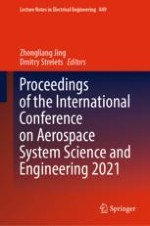2023 | OriginalPaper | Chapter
Interfacial Properties of Stitched Three-Dimensional Woven Composite/Titanium Alloy Hybrid Board
Author : Chongjing Li
Published in: Proceedings of the International Conference on Aerospace System Science and Engineering 2021
Publisher: Springer Nature Singapore
Activate our intelligent search to find suitable subject content or patents.
Select sections of text to find matching patents with Artificial Intelligence. powered by
Select sections of text to find additional relevant content using AI-assisted search. powered by
